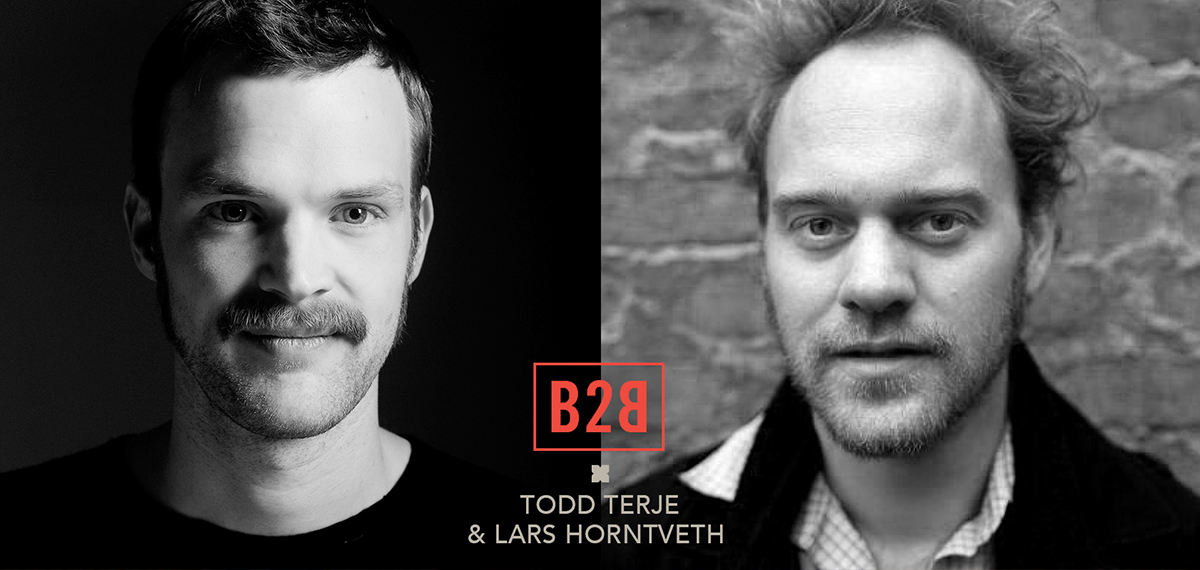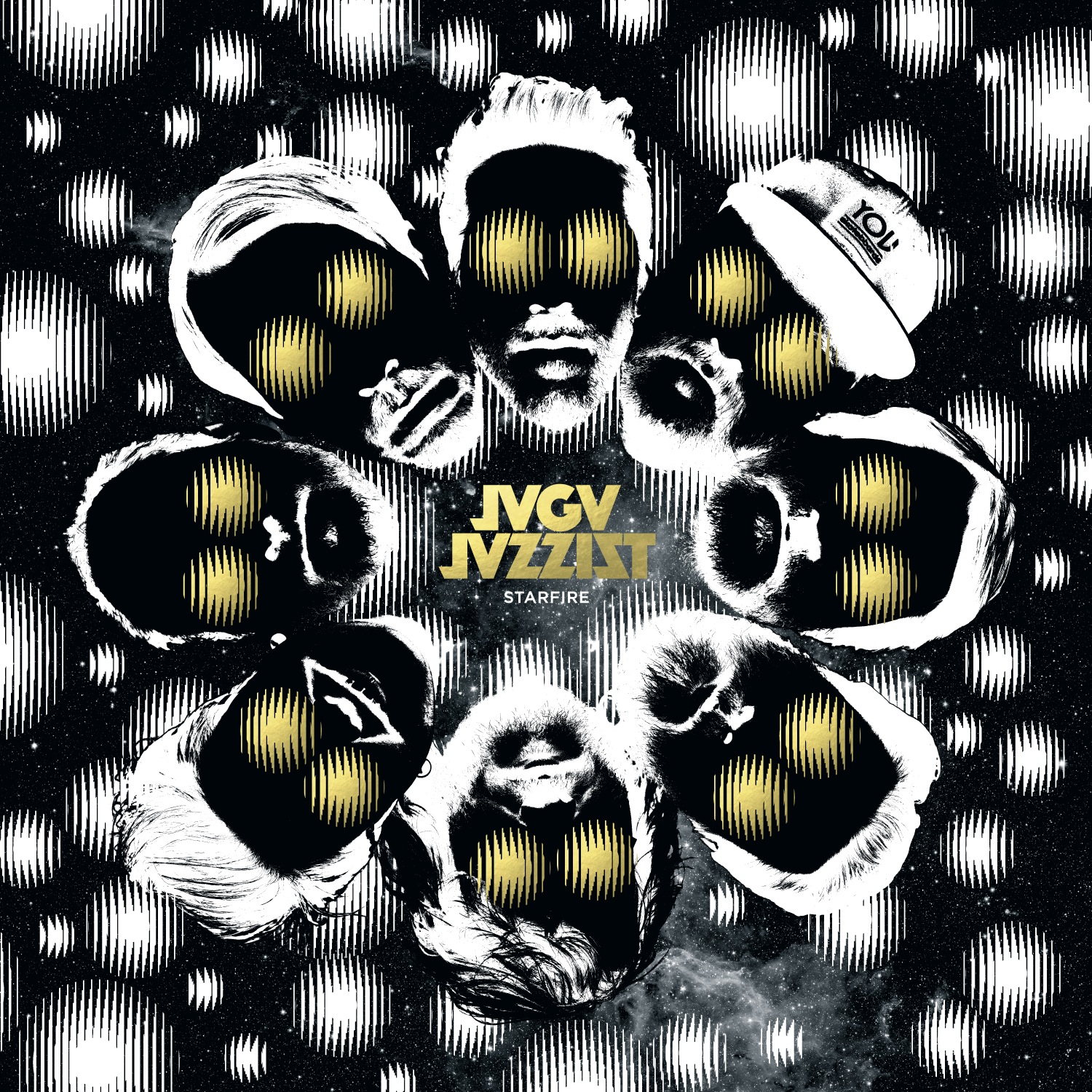B2B: Todd Terje and Jaga Jazzist’s Lars Horntveth
Two seemingly divergent music makers find common ground.

B2B: Todd Terje and Jaga Jazzist’s Lars Horntveth
Two seemingly divergent music makers find common ground.

Terje Olsen, better known as Todd Terje, is one of the kings of the Norwegian sound, having climbed up Oslo’s nu-disco ladder to reach global clubland fame via an array of world-conquering tracks—including, of course, “Inspector Norse,” the deceptively bubbly tune that steamrolled the competition to become one of the tunes of 2012. His fellow Oslovian Lars Horntveth, meanwhile, inhabits a somewhat more arcane musical world: He’s a founding member of Jaga Jazzist, the experimentally-inclined jazz ensemble that’s been plying its wide-screen, post-rock–tinged trade for the past two decades.
One might think that Olsen and Horntveth have little in common, other than that they both create music and they both hail from Norway’s capital—but one would be wrong. Horntveth serves as a key player in Olsen’s live band, and this past May, Olsen returned the favor by reworking the Jaga Jazzist cut “Oban” into something typically Todd Terje–esque, transforming the sprawling, swerving original into a chugger of a track that retains the song’s sweeping feel while transforming it into something much more dancefloor-friendly. The song was the lead cut off of Jaga Jazzist’s just-released new Ninja Tune album, Starfire, which sees the combo expanding their densely-packed, careening sonic palette by stretching the songs out to epic length and infusing them with a dose of hard-edged electronics. XLR8R caught up with the pair to talk about remixes, monotonous music, and Bryan Ferry.

Before we get into it, I have to say that I love the first paragraph of your new record’s press release.
Horntveth: Oh, what does it say?
It goes like this: “When the biggest stars in our universe begin to burn up and collapse they release neon gas. When electricity is passed through neon gas it glows. When it’s captured within glass we can use it to make colored light. When that glass is shaped into the outline of a naked girl it can be hung outside a strip club.”
Horntveth: [laughs]
Olsen: That’s so funny.
It kind of fits Starfire’s music, which you could say is both cosmic and carnal.
Horntveth: Well, you know—whatever makes people happy.
How long have you two known each other?
Horntveth: Not that long, really. But I’ve played with Terje’s brother since I was about 15, I think.
And now you play in Terje’s live band, where the music is perhaps a bit more linear and direct than Jaga Jazzist’s sound. Is that a refreshing change for you?
Horntveth: Maybe a bit. But I actually make it difficult for myself in his band by playing bass and guitar, and sax and flute…and vibraphone.
Jeez, you do make it difficult.
Horntveth: But there are two or three songs where I just stand there and play a bassline for like five minutes. I love that.
How is Terje as a bandleader? Is he a tyrant?
Horntveth: Absolutely!
Olsen: What?
Horntveth: No, he’s very chill.
Olsen: I have the music arranged for a live situation ahead of time, so I think it’s pretty easy, really.
Was getting Terje to do a remix of “Oban” a way of getting a bit of payback for playing in his live band?
Horntveth: Well, not exactly. I first started becoming familiar with Terje’s music about the same time that I started writing this album. I think the first one I really heard was “Spiral,” which I don’t think Terje even likes that much.
Olsen: That’s right. [laughs]
Horntveth: I had just gotten my license, so I was driving a lot and listening to a lot of his music. I just liked the way his music would slowly build up—and that was sort of the genesis of the songwriting on Starfire. He had a lot of these 15-minute songs. I wanted to try something similar to that—stretching things out and not having everything piled on top of each other all the time—but in our own way.
The music isn’t exactly club music—but besides the length and the relative sparseness of the tracks, there are also more electronic elements than usual for Jaga Jazzist. What was the reasoning behind that?
Horntveth: It’s was just to try something differently, really. But I don’t think many people will actually dance to this music [laughs]. Maybe we’ll be surprised.
People have probably been dancing to the “Oban” remix, though. Terje, when you are remixing for somebody that you know and work with, does that put any additional pressure on you?
Olsen: No, I don’t think so. I actually have really wanted to remix Jaga Jazzist before, but I didn’t have the time. This time, it all worked out. But since we’ve gotten to know each other…I really don’t think that changed how I approached the remix. I was interested to hear how Lars approached the long-track format on the album—and what I ended up doing was to take the original song’s highly concentrated mass of music, and then washing it out to something that DJs can play. DJs don’t normally very much stuff happening in their music, I don’t think; it’s easier for people to grasp a piece of music if there aren’t too many ideas to grasp within the song, and that also makes it easier for DJs to use as a tool. If there’s too much, it’s difficult to remember everything that happens in a track! That boring thing where you count bars—that’s very helpful for DJs. They need to be able to expect what’s going to happen at the next turn.
You’re speaking from experience, of course.
Olsen: Of course. I’ve been a DJ for so long that it’s very much affected how I make long tracks. And what a DJ needs is very different than what Lars does, or really what any music producer who isn’t a dance-music producer does. It’s really two different worlds.
Do you find it more challenging to remix a song that wasn’t originally made as a dance track?
Olsen: Well, in general when remixing, there are two ways to go: Make things simpler, or make things more complicated. If I had gotten some track to remix that was really, really monotonous and didn’t contain much music, I would probably have to bring out my vibraphone or something, [laughs] But when you have something as musically complex as a Jaga Jazzist track, you just have to concentrate on one piece and really focus on that.

One thing that you focused on with your remix of “Oban” was the melody, which you pretty much kept intact.
Olsen: Yeah, it’s actually a fairly respectful remix. But there were many parts that I really liked that I didn’t include, simply because I felt that it wouldn’t be…symmetric, I guess. I think mathematically about music, I suppose. Which I suppose can sometimes result in boring songs, but that’s how I approach music.
Hornthveth: I love the remix. For me, that track’s sound brings me back to the really early ‘90s; it almost makes me think of bands like the Happy Mondays or something like that! It reminds of early English club music. And I love the way Terje used the melodies. Remixes will often just use a snippet of the original track, something that’s almost unrecognizable, and makes an entirely new song. Which can be supercool, of course, but I’m more a fan of the old maxi-single style of remixing, where they actually use the melody, but maybe stretch the song out and strip it down a little.

Was this a planned effort to expand Jaga Jazzist’s audience by getting dance-music fans to hear your music?
Horntveth: I guess that is always part of why you do remixes. You want to get something unexpected, but you also want to reach out and get different people to hear your music. But in this case, that wasn’t the main thing at all—I’m inspired by Terje’s music, and once I started playing in his band, we started talking about this. As Terje said, we’ve actually been talking about have Terje remix something for a while, but it didn’t happen until now.

On a whole other subject, I have to ask you about having Bryan Ferry sing “Johnny & Mary” live with you last year at Coachella and Oslo’s Oya Festival. I’m such a huge fan of him—what was that like?[Note: Ferry performs with Olsen and the band at the 44-minute mark in the above Oya Festival video.]
Olsen: It was nice! I think he enjoyed it quite a lot. He’s a very nice guy.
Horntveth: When we were here in Oslo with him, we played the song once for him, we were all happy—and he said, “Is it okay if I just stay here for the rest of the rehearsal?” We were like, “Sure..…” He stayed for like an hour. He was actually kind of nerdy, checking out guitar pedals and stuff.
Olsen: And then he asked my brother, Olaf, if Olaf would be his drummer! Unfortunately, he wasn’t able. Too bad for Olaf!
Jaga Jazzist performs in Montreal, Canada on June 29, and Ottawa, Canada on June 30.

